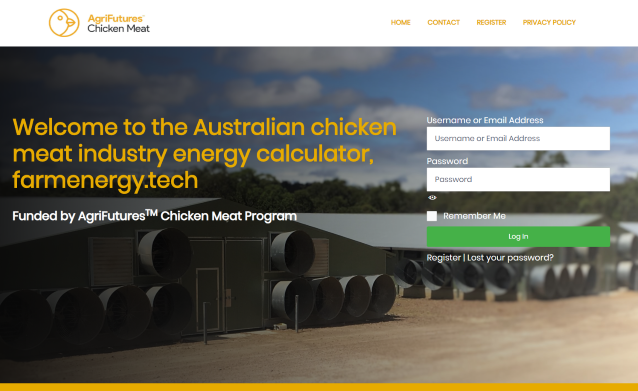Dr Forde’s project, funded by the AgriFutures Chicken Meat Program, investigated energy cost reductions for broiler farms via renewable energy and embedded generation.
The chicken meat industry has many opportunities to capitalise on chicken meat’s modest environmental footprint and to further reduce its environmental impacts. A key objective of the AgriFutures Chicken Meat Program is to develop and implement measures to improve industry’s impact on the environment.
This project aimed to update the industry’s understanding of renewable technology and its feasibility on-farm, increasing adoption and reducing operational costs, emissions and improving bird welfare in an economically viable way.
This project captured decades of energy market and engineering knowledge and placed it into a simple-to-use free tool for everyone. It is not a design or full quotation tool, but an options analysis for how PV solar, batteries and solar thermal, using dry heat exchangers can reduce costs via renewable energy on Australian chicken farms.
Why is this research project important?
Sometimes the world is more complex than it needs to be. We set out to simplify energy options and found that useful information can be provided without the need for someone to enter any data at all. For a particular type of business, such as a broiler farm, the main energy inputs of electricity and heating fuel can be correlated to key business metrics, such as the number of sheds.
So, we built a tool that has an shed scenario “pre-loaded” tool so you can simply view the energy options for a “typical” facility. The accuracy can be improved by entering more data such as different number of sheds, shed length, shed width, geographic location, and then defining what type of solar/battery system you are interested in or the current fuel that you use. The aim is to provide broiler operations with “instant renewable energy options”.









